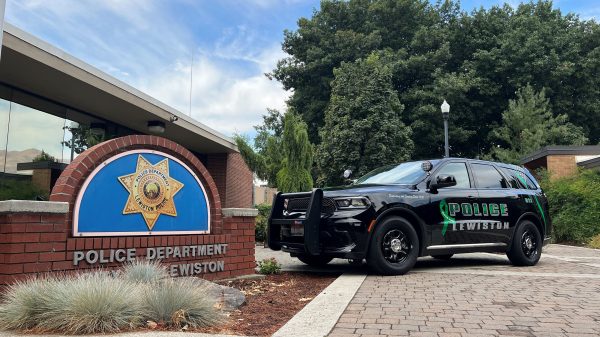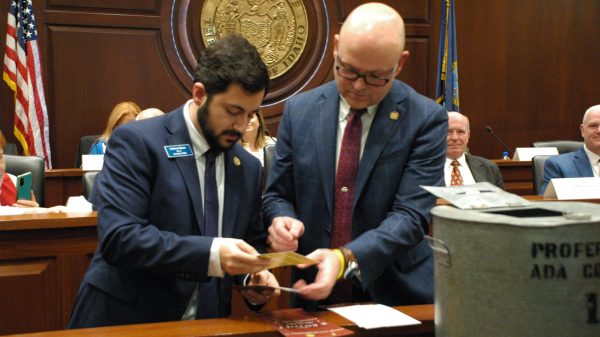PULLMAN – An X‑ray beamline with a first-of-its-kind imaging source is being installed at Washington State University’s Dodgen Research Facility. The instrument, valued at over $1 million, will allow researchers to study a range of materials at nano- and atomic-scales. It’s also perhaps the only X‑ray beamline in the world to be housed in the same facility as a research nuclear reactor, facilitating the study of irradiated materials.
The 20-foot-long instrument sends a beam of light that can penetrate through a sample which then scatters the beam onto a detector. This allows scientists to see the material’s nanostructures and atomic features. WSU’s X‑ray beamline can analyze a wide array of organic and inorganic materials from plant leaves to irradiated heavy elements to nanoparticles used in smart medicine.
“It’s a very versatile instrument,” said Liane Moreau, a WSU assistant professor of chemistry. “It has some pretty unique capabilities. It’s the only one currently in the United States that has an imaging source. That allows us to take images and get data from a specific spot on a sample and correlate it to different spots and structures the sample might have.”
Unlike a high-powered microscope which requires dried samples, the X‑ray beamline can measure liquids and material dissolved in a solution. Researchers can also modify the environment, including changing temperature or humidity, or introducing a gas, and see how the material responds in real-time.
The machine can collect data on atomic and nanoscale structures of interest to a wide range of fields including biology, chemistry, engineering, medicine, and pharmaceutical sciences. The researchers encouraged other WSU faculty to explore how this instrument might help with their investigations.
“We are very open to working with people in different disciplines,” said Brian Collins, an associate professor of physics. “We have a team of faculty who are well versed in X‑ray techniques. We’ve worked with materials from the lightest down to the heaviest elements.”
Moreau, Collins, and chemistry Professor Jim Boncella helped secure the funding to bring the beamline to WSU, raising $850,000 from funds granted through the M. J. Murdock Charitable Trust and university support. Xenocs, the company that makes the machine, also gave WSU a discount and provided the unique imaging source, valued at over $110,000, for free, in return for helping test its capabilities.
Prior to receiving this instrument, WSU researchers who wanted to make these types of measurements had to reserve time and ship materials to one of five available synchrotrons housed in Berkeley and Palo Alto, California; Chicago; and Long Island and Ithaca, New York. Moreau, who works with radioactive elements with short half‑lives, also had additional regulatory obstacles to getting samples analyzed.
Now researchers will be looking to WSU to access this X‑ray beamline. Corey Hines, director of WSU’s Nuclear Science Center at the Dodgen Research Facility, has already had inquiries from researchers at U.S. National Laboratories. He is also looking forward to having more WSU researchers use the capabilities now at the Dodgen Research Facility.
“The Nuclear Science Center is a user facility for WSU faculty to perform cutting edge research in nuclear science,” he said. “The facility is growing fast, and it’s only going to getter better with the exciting new capabilities this instrument provides.”
















































